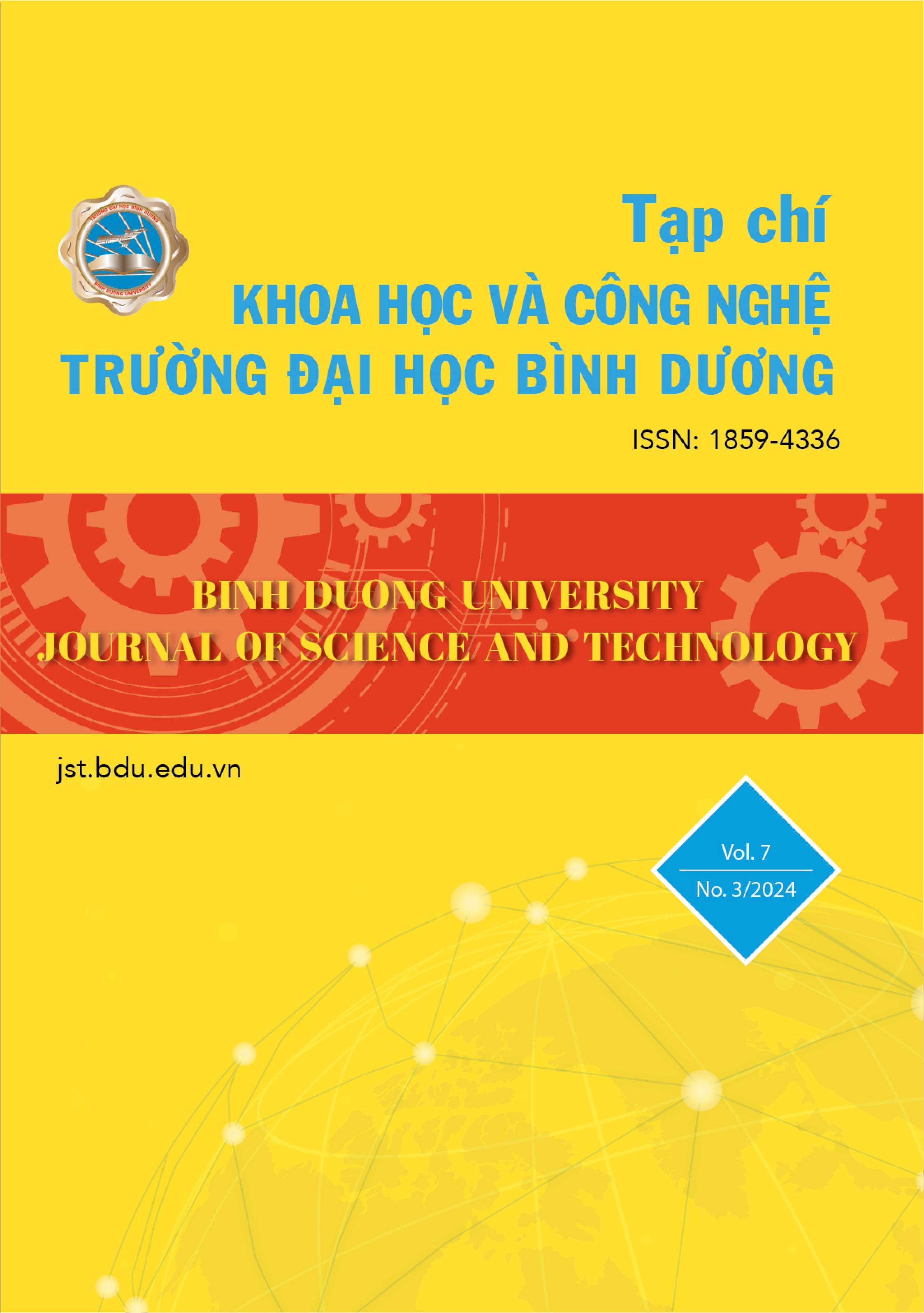Phytochemical investigation and total polyphenol content from Citrus hystrix DC. peel extracts
DOI:
https://doi.org/10.56097/binhduonguniversityjournalofscienceandtechnology.v7i3.266Keywords:
Citrus hystrix DC., phytochemistry; total polyphenolAbstract
Fruits, seeds, leaves, and roots of medical plants, including Kaffir lime (Citrus
hystrix DC.), contain phenolic compounds to different extents. C. hystrix is a type of Citrus
fruit with a high content of phenolic compounds. Fruit peels have been reported to exhibit
higher antioxidant content than the edible part. Therefore, C. hystrix peel was selected in this
study. This work investigated the effect of solvent polarity (hexane, ethyl acetate, and nbutanol) employed during the fractionation of ethanolic crude extract and determined the total
polyphenol content in fractionated extracts. Using specific chemical reactions to characterize
the chemical composition of C. hystrix fruit peel extract. The total polyphenol content in the
fractionated extracts was determined by measuring the absorbance of the extract with the
standard of gallic acid. The results show that all the ethanol extracts of C. hystrix peel included
polyphenols, flavonoids, coumarins, tannins, and reducing agents. The total polyphenol content
in young C. hystrix peel is the highest, with a content of 0,337 mg/g. Besides, the total
polyphenol content in ethyl acetate extract (0,128 mg/g) is higher than in n-hexane (0,016
mg/g), n-butanol (0,084 mg/g) and water (0,039 mg/g). This result is the first report on the
phenolic compounds in C. hystrix peel extracts at three stages of fruit growth. It can be helpful
to scientific data for application in the pharmaceutical industry and other fields in our lives.






